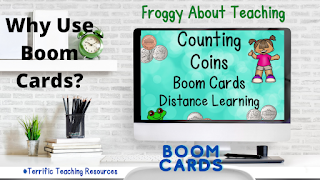WRITE SANTA A LETTER
Do your students know how to write a letter? Maybe they don’t
know what a letter is? It would be great if K-1 students learned how to write a
letter to Santa.
Santa Letter Activities
I created a teaching
resource that takes your student step-by-step leading up to writing Santa a
letter. Teachers, this packet has lots of choices that will allow you to
differentiate and have your students write the letter and put it into a
Christmas envelope.
I have made this
resource available on Amped
Up Learning and Teachers
Pay Teachers.
Standards-Based
This is a standards-based resource that is divided into 6 sections. Teachers, you will have lots of choices of what activities to assign to your students. Your students will be writing a list, writing sequence, tracing, drawing, and labeling. Lesson instructions have been included.
CC-W.K.1-3, CC-W.1.2-3
Letter Materials
In the Letter-Writing
Materials Section Students will learn what materials are needed to create a
letter. Students can begin by tracing a list of letter supplies or can write a
list of letter supplies. The next step could be drawing and labeling the letter
materials or writing what materials are needed to write Santa a Letter.
Students could end this section by telling the sequence steps for writing Santa
a letter.
It includes a Santa
Vocabulary list that students can trace and color.
Make a Toy Wish List
I call the next
section Toy Choices. These activities will prepare them to make a toy
wish list. You will have the choices to assign the trace and color or the write
and color a set of toys. You know your students and what they need. Then they
can get the graphic organizer and draw and label their toy choices. To end
this section, students will draw-label-write about their
toy choices and create the Toy Wish List.
Santa Face Activities
The fourth section is the Santa Face Activities. They
will get to trace and color or label and color Santa’s face. At the end of
this section, students can either make a list of Santa’s Face Features or write
about them.
All About Santa
The next part is the All About Santa where they will
fill an info chart, Santa Buzz, telling what Santa is like. Then they get
to make a Mini Santa Book (print front and back on the short
edge) telling the sequence of Santa coming to visit.
Santa Letter
The final section is writing the actual letter. A model letter is
provided that you can review with your students. Then they can either trace and
fill a sentence frame or write their own letter. Then they can color a Santa
topper and add it to their letter (great for decorating a bulletin board). Or
they can color and fold the Christmas Envelope and place their letter in the
envelope. Teachers, I would have the students do both Santa letters and one can
go into the envelope and you can use the other to decorate your bulletin board.
This resource was made with love and care for beginning
writers.
Froggy About Teaching
My friend Christy with Happy Hive Homeschooling tells about her December Holiday-themed teaching resources. She makes first-rate teaching resources! Go take a look at Holidays for December to check them out!
Take a look at the wonderful December-Winter Themed Resources that have been created by Teacher Contributors on Amped Up Learning, Winter Holiday Themed Resources.


















































